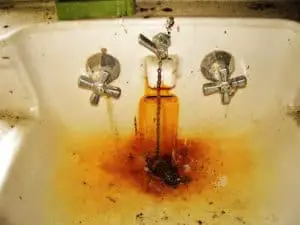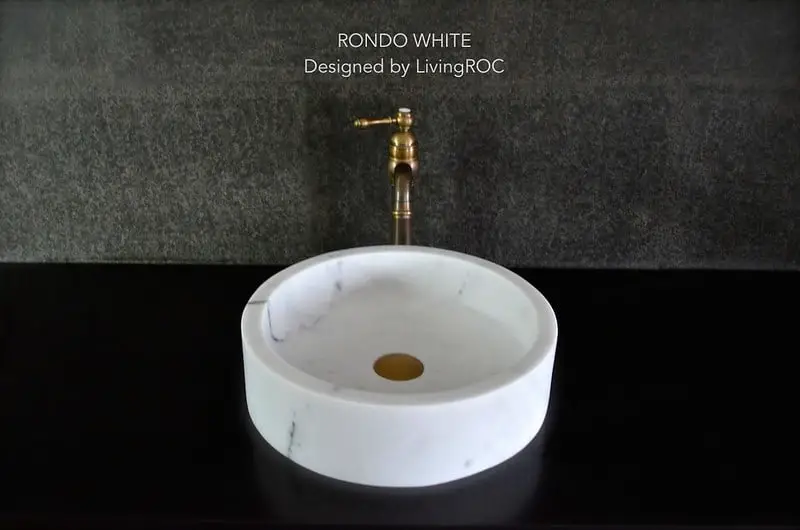Every homeowner dreads those tiny black lines that often start to develop on the bathroom sink from nowhere. Seeing one may mean you will need to replace the sink in a few months.
If you’re unlucky, what started as a small line may end up covering a big part of the fixture.
If you have been in homecare forums, you may have heard even the most sanitary and careful homeowners lament how hairline cracks emerged from nowhere and turned their pricey sinks into unsightly bowls.
So, What Causes Hairline Cracks In Bathroom Sinks?
Sometimes it has something to do with the type and quality of the material of construction. If you are always rough on your sink, there is a likelihood the hairline cracks will start emerging when things get unbearable.
7 Manufactured Home Bathroom Sink Hairline Crack Causes
Let’s take a glance at some of the common causes of these annoying flaw lines:
1. Changes in Temperature – Erratic Temperatures Crack Sinks
Different materials respond differently to temperature changes.
Any fluctuation in temperature can make a material contract or expand. In most cases, temperature fluctuation is minor and doesn’t mean anything significant to your fixture.
In extreme cases, however, wide temperature fluctuations can cause your fixture to expand and contract, putting a significant strain on the structure of the sink.
When this occurs, hairline cracks can start to develop on the sink, starting in areas under higher pressure or strain.
Porcelain is particularly more vulnerable to temperature fluctuations than most materials used to make bathroom sinks.
- If you have porcelain sinks installed in your bathroom, don’t alternate between cold and hot water in a short time.
- Use your hot water, drain, pause for a few minutes for the fixture to cool, then let in the cold water. Also, refrain from pouring boiling water down your porcelain sink.
2. Rusting – Some Sinks Do Rust from Inside

Sometimes manufacturers find it necessary to improve the structural integrity of acrylic or porcelain sink for your own good.
One of the common ways used to strengthen these sinks is by adding a few layers of steel sheets inside the fixture.
This well-intended move sometimes brings problems later in the life of the sink because the sink is known to rust when exposed to moisture.
While rust is ugly in its own right, there is more to it than ruining the beauty of your fixture.
You know, when steel rusts, just like any other metal that rusts, it tends to swell slightly and ends up exerting pressure on whatever it may be supporting.
Most materials can withstand such tiny pressures – buildings don’t collapse with slight corrosion in their steel skeleton because concrete can absorb the pressure.
The problem with bathroom sinks is that they are often made from highly brittle materials like porcelain which will begin cracking under the slightest strain.
So, if the rust on the interior layers of steel is extensive enough, the fixture will begin showing hairline cracks from points where the strains are most profound.
3. Force – Basically, Not Being Gentle on Your Sink
Force is the top destroyer of bathroom sinks and there is a likelihood it’s the culprit behind those hairline cracks.
When you move items, say, furniture, in and out of the bathroom, they are more likely to hit the sink. If the impact is severe, your fixture will be ruined there and then.
The impact may be minor at times and only a tiny crack would occur a few days or hairs later before spreading wider.
Also, if you drop heavy items in the fixture, say, some of your tools, cracks may occur depending on the severity of the impact. Minor impacts can create the genesis of hairline cracks because the effect takes some time to become apparent.
Force-induced hairline cracks are also the easiest to prevent – just be gentle on your sink.
Alternatively, add some padding foams, sponge, or a layer of blankets around the fixture when moving large items that might hit it. If you are used to dropping heavy items in the sink, find a way of stopping it.
4. Natural Hairline Cracks – Sinks Sometime Crack All by Themselves
There is a chance nothing caused the hairline crack on your fixture. A big part of the sinks sold today are made from natural stone.
Before turning into sinks, these natural stones are normally molten, folded, and hardened to create natural grains.
Many homeowners covet the beautiful looks brought by these grains, and that’s why this type of sinks is getting popular.
The problem with natural stones is that, unlike porcelain, acrylic, and non-stone materials, some of them come with weak points within their structure. So, with a time of use, hairline cracks may begin showing in these areas of weaknesses.
You can avoid this problem by going for the high-quality stone fixture you could find in the store.
The good thing, however, is that you might be able to spot the weak points before the cracks start forming. Reinforce or repair small cracks immediately you spot them.
5. Acid Effect – Some Acids Do Burn and Crack Some Types of Enamel
Acids are the least causes of cracks in sinks, but they pose a considerable threat.
Stone sinks are resistant to most chemicals. Porcelain can be different – the resistance of porcelain to acids depends on the type of porcelain.
However, most types resist the harsh effects of most acids except hydrochloric acid. In most cases, all you may have to contend with are some minor discoloration on the surface of the fixture.
In some cases, however, especially after prolonged exposure, tiny cracks may begin to emerge on the margins of the drain hole.
Chances of acids ending up in your sink are minimal unless you form a habit of pouring toilet cleaners in it. Some hair products come with tiny quantities of acids, but that’s negligible.
If you must bring products with significant hydrochloric acid content in your bathroom, keep them away from your porcelain sinks at all costs.
6. Plumber-induced Stress – Undue Tightening by the Plumber Could the Culprit

This is one of the top causes of hairline cracks in bathroom sinks, especially those made from porcelain.
During the installation process, the plumber may apply too much stress on the structure of the fixture through excessive tightening.
Cracks caused by undue tightening tend to emerge around the base of the faucet and round the drain hole.
Leaving these areas loose and weak can’t be good for the proper functioning of the sink, so the plumber is more likely to go a bit hard on them.
7. Ceramic Sink – The Mere Fact That the Sink Is Made from Ceramic
Check in any homecare forum and you will find numerous disgruntled homeowners whose ceramic fixtures developed hairline cracks out of nowhere even after operating under the best care in the world.
The older your ceramic sink is there stronger the likelihood of developing these cracks anywhere from the brim to the drain.
However, this tends to be more likely after about five years of service.
Subjecting the above-mentioned factors such as shock, harsh chemicals, rusting, and rapid changes in temperature may hasten the problem. You can avoid cracks by going for the best quality ceramic fixture in the store.
In a nutshell
Most of the causes of hairline cracks are human-induced. Once a crack emerges, it is near-impossible to correct it; most of the corrective measures tend to clear off and reveal them again regardless of the cause.
The top causes of cracks sinks are:
- Rapid changes in temperature can cause your fixture to expand and contract, putting a significant strain on the structure of the sink and eventually giving rise to cracks.
- At times, manufacturers boost the structural integrity of acrylic or porcelain sinks by adding a firm meshwork of steel within the sink. If exposed to moisture, the steel is more likely to rust, expand, and create cracks in the brittle material used to make the sink
- The impact from an external force, say, dropping a heavy object in the sink or hitting with an object, may create an area of weakness that may form the genesis of a hairline crack.
- Natural stones, unlike porcelain, acrylic, and non-stone materials, tend to come with weak points within their structure. With continued use, lines may start to form from flawed paints to form hairline cracks.
- While most stones and ceramics have been engineered to be resistant to acids and other chemicals, some may react differently. Porcelain is vulnerable to hydrochloric acid and can be weakened by its presence. However, the chances of acids ending up in your sink are minimal unless you form a habit of pouring toilet cleaners in it.
- During the installation process, the plumber may apply too much stress on the structure of the fixture through excessive tightening which may create a precursor for cracks.
- The older your ceramic sink is there stronger the likelihood of developing these cracks anywhere from the brim to the drain. Subjecting any ceramic to any of the common agents such as shock, harsh chemicals, rusting, and rapid changes in temperature may hasten the problem. You can avoid cracks by going for the best quality ceramic fixture in the store.

